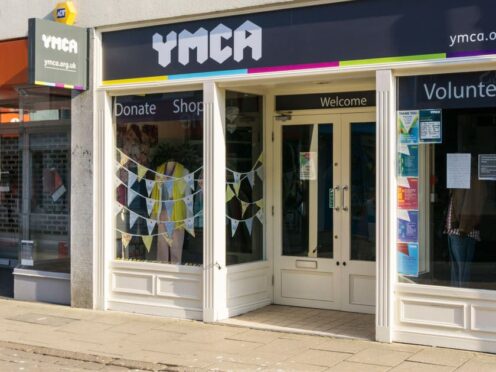
The next government must commit to greater funding for youth services, the YMCA has urged as it estimated that cuts in recent years have seen thousands of young people miss out on opportunities to build confidence and skills.
The organisation, which describes itself as the oldest charitable provider of youth services in England and Wales, offers services to about 35,000 young people across the two nations.
It said, in the past decade, the number of local authority-run youth centres fell by 53% in England and 62% in Wales, based on its own research combined with data gathered by the public services union Unison.
The organisation also highlighted a decline in staffing, saying there had been a 35% reduction in full-time youth workers employed by local authorities in England since 2012, although the numbers have begun to rise again since 2018.
YMCA said Wales had seen a more gradual decline since 2015, with the number of full-time local authority youth workers overall down by just over a third since 2012.
The charity welcomed a recent increase in youth services expenditure in England as “a positive step” but said “such piecemeal annual additional spending does little to counteract how severely funding has been cut since 2010-11”.
The YMCA’s On The Ropes report said: “Taking into account 2022-23 spending levels, the figures still represent a £1.1 billion real-terms reduction in local authority expenditure since 2010-11.”
The charity said Welsh local authority expenditure had generally increased in real terms over the past few years, aside from during the pandemic.
But the YMCA noted that, with “such severe budgetary constraints” as seen in recent years on councils, “the universal youth services offering may be the easiest area in a children’s services budget to reduce”.
The report said: “This should not be a choice councils have to take, and we implore that all young people should have year-round access to a safe space they can access easily, and with the support of trusted adults who can help them set solid foundations in their development.”
In September, the Department for Culture, Media and Sport (DCMS) in England issued guidance for local authorities around their statutory duty to “secure, so far as reasonably practicable, leisure-time activities and facilities for young people aged 13 to 19 and those with learning difficulties or disabilities aged 20 to 24”.
While the YMCA welcomed this, it said that without an increase in funding, local authorities “will be stretched to deliver any extra provision without making cuts in other places”.
Denise Hatton, chief executive of YMCA England and Wales, said: “Investing in the potential of our nation’s young people is critical for building a brighter future.
“Unfortunately, the length and nature of these funding cuts have taken their toll on youth support systems, leaving thousands without opportunities or a safe place to build confidence, connection, and valuable skills.
“The youth sector stands ready in working together with the next government to break down departmental silos and ensure that every young person has access to the essential lifeline of universal youth services, regardless of their circumstances or locality.”
She insisted youth services “are not a luxury but the bedrock of a prosperous future”.
She said: “Now’s our chance to envision a society where every young individual receives the support needed to thrive.
“It’s not just an investment in youth services; it’s an investment in the heart and soul of our nation’s young people.”
A spokesperson for the Local Government Association, which represents councils in England and Wales, said: “Councils continue to face significant funding and demand pressures and youth services have faced cost-saving reductions as a result.
“We have consistently called for a cross-departmental strategy for children, young people and families – of which services for young people would be a key part – and encourage the Government to provide adequate funding to councils so they can deliver on their statutory duty to ensure that all young people can access youth services in their area.”
A DCMS spokesperson said: “Local authorities have a statutory duty to ensure young people can access youth services, and the Government is delivering an above inflation increase in funding for councils to over £64 billion for 24-25.
“We have additionally provided significant funding for youth services, including over £1.1 billion for the youth sector in England between 2015 and 2021.
“We are also investing over £500 million to deliver the national youth guarantee so that, by 2025, every young person will have access to regular clubs and activities, adventures away from home and opportunities to volunteer.
“As part of this, 45,000 more young people a year are to be supported through the youth investment fund, which is rebuilding or redeveloping up to 300 youth centres across the country.”
A Welsh Government spokesperson said: “We have provided £13 million of direct funding this year to help ensure local authorities and voluntary youth work organisations support young people in their local areas.
“Unlike in England, we have trebled the direct funding available since 2018, reflecting the vital role it plays in supporting young people to reach their potential.”

Enjoy the convenience of having The Sunday Post delivered as a digital ePaper straight to your smartphone, tablet or computer.
Subscribe for only £5.49 a month and enjoy all the benefits of the printed paper as a digital replica.
Subscribe